Walking is not just about moving from one place to another. It also engages our senses. Such an experience forges affective bonds between pedestrians and their city by immersing them in urban ambiances. Ambiances are shared by any city inhabitant: they are a common treasure upon which urbanity takes root.
Sometimes — for a day, a week, or a month — Paris turns into the very kingdom of walkers. That is, during transit strikes, when subway trains and buses stop running. Millions of walkers flood the streets, as the Métro and bus network release the load of crowded bodies it usually carries.
Walking becomes then an immersive and collective experience. On such occasions, you simultaneously “never walk alone” and “take a walk on the wild side”. What a bargain! Beyond all the mayhem these strikes create, it is paradoxically a rather joyful adventure. Total strangers that usually stay distant from one another — not to say never speak to one another — suddenly share the same ordeal, the same adventure. These moments are enchanted interludes aside daily routine. They give room to rediscover the city’s atmosphere and look into the eyes of all these people they walk alongside: time for unexpectedly nice encounters.
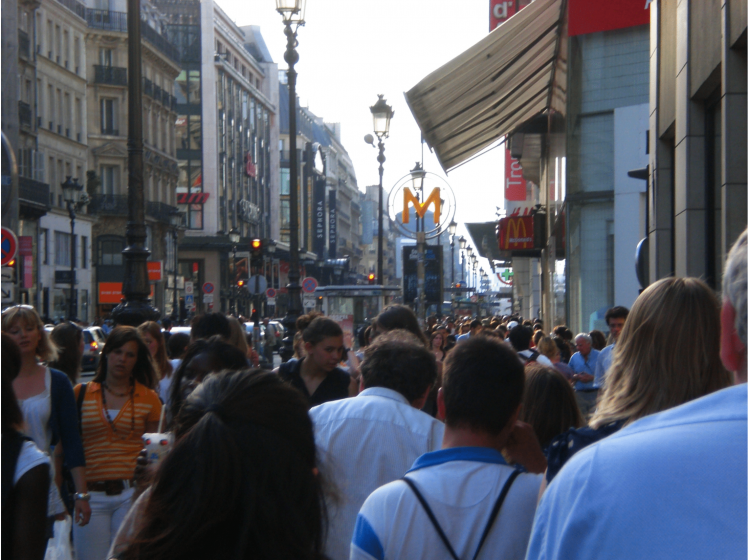
What can we learn from this? When walking becomes the only solution to move across the city, urbanity comes back. What do we call urbanity here? Urbanity is not just a synonym for urban life, but also for kindness and civility. The fact is that the walkability of a city is primordial to foster urbanity. Indeed, it is in Europe at the end of the 18th that the notion of “urbanity” began to be used. It was associated with the custom of the promenade: people got out and walked synchronously along specifically designed boulevards, avenues, or linear parks often themselves as promenades at a specific moment — usually in the evening or on Sundays, in order to be seen and considered part of society.
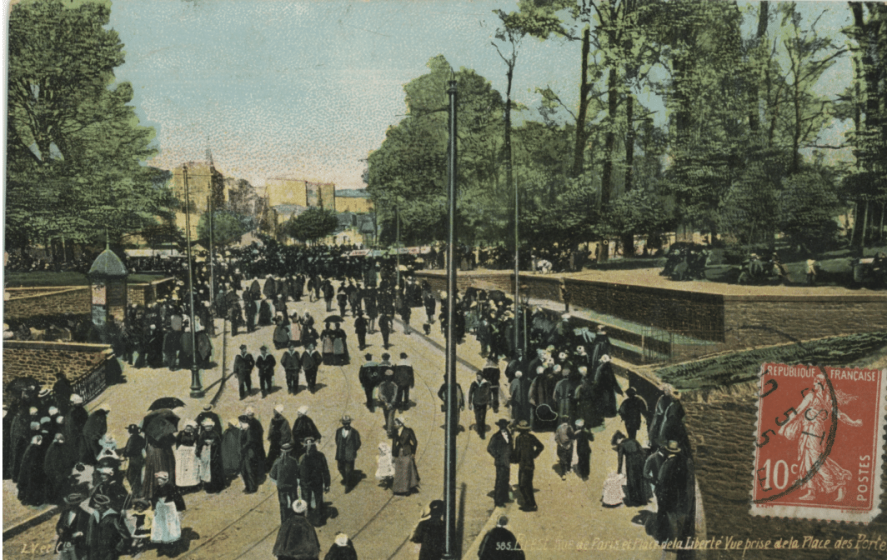
Many well-known historical promenades remain like the Ramblas in Barcelona, the Tuileries in Paris, many Corsos in Italy, etc. The custom itself goes under many names such as paseo in Spanish-speaking countries. Today, the habit of promenade has become less formal, and less massive. But still, periodically the urge remains to immerse oneself in the city, engage in conversation with other people, breathe some fresh air, and eventually see and be seen.
The only difference being that today it is less about social control and compliance with social standards than about the pleasure of hanging out or just chilling out with friends or family, or alone.
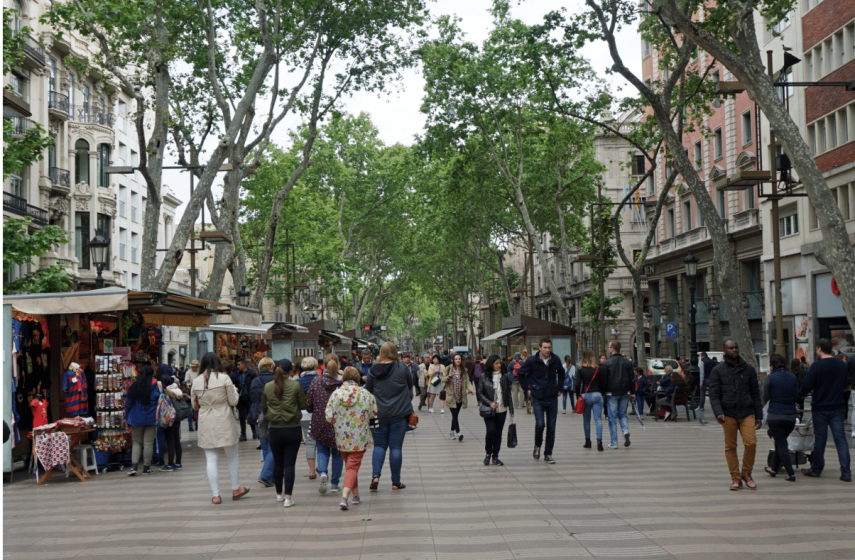
Alberto Giacometti’s bronze sculpture known as L’homme qui marche (The Walking Man) is a symbol of both fragility and strong determination.
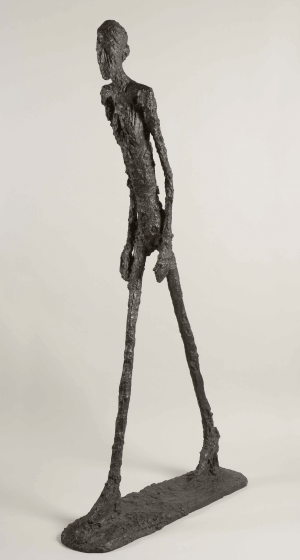
It was described by the artist as the image of an ordinary man that embodies humankind. He comes from somewhere and is on his way to elsewhere, to discover the world. The fact is that, since the dawn of humanity, we are walkers.
Indeed, when we cannot walk life becomes unbearable. Just remember COVID-19 lockdown. This long period during which we were supposed to stay at home. Any occasion to go out and walk a bit was a feast: even running errands or taking the dog out. Chores that usually were so tedious suddenly became so attractive. Some people walked 1000 times over around their bed or their room on a daily basis, in order not to get nuts. Others walked frenetically up and down the staircase of their building. Underground car parks became places to stroll around. Do you recall? It should still be fresh in your mind.
And why is walking so important? Because walking is not just about moving from one place to another. It also engages our senses. We are transformed by what we perceive from our environment while strolling. It means that walking is an aesthetic experience that stimulates perception, insight, and representation of our close environment: both a source of knowledge on oneself, the areas crossed, and the people one passes by. Such an experience forges affective bonds between pedestrians and their city, by immersing them in urban ambiances. Ambiances are shared by any city inhabitant: they are a common treasure upon which urbanity takes root.
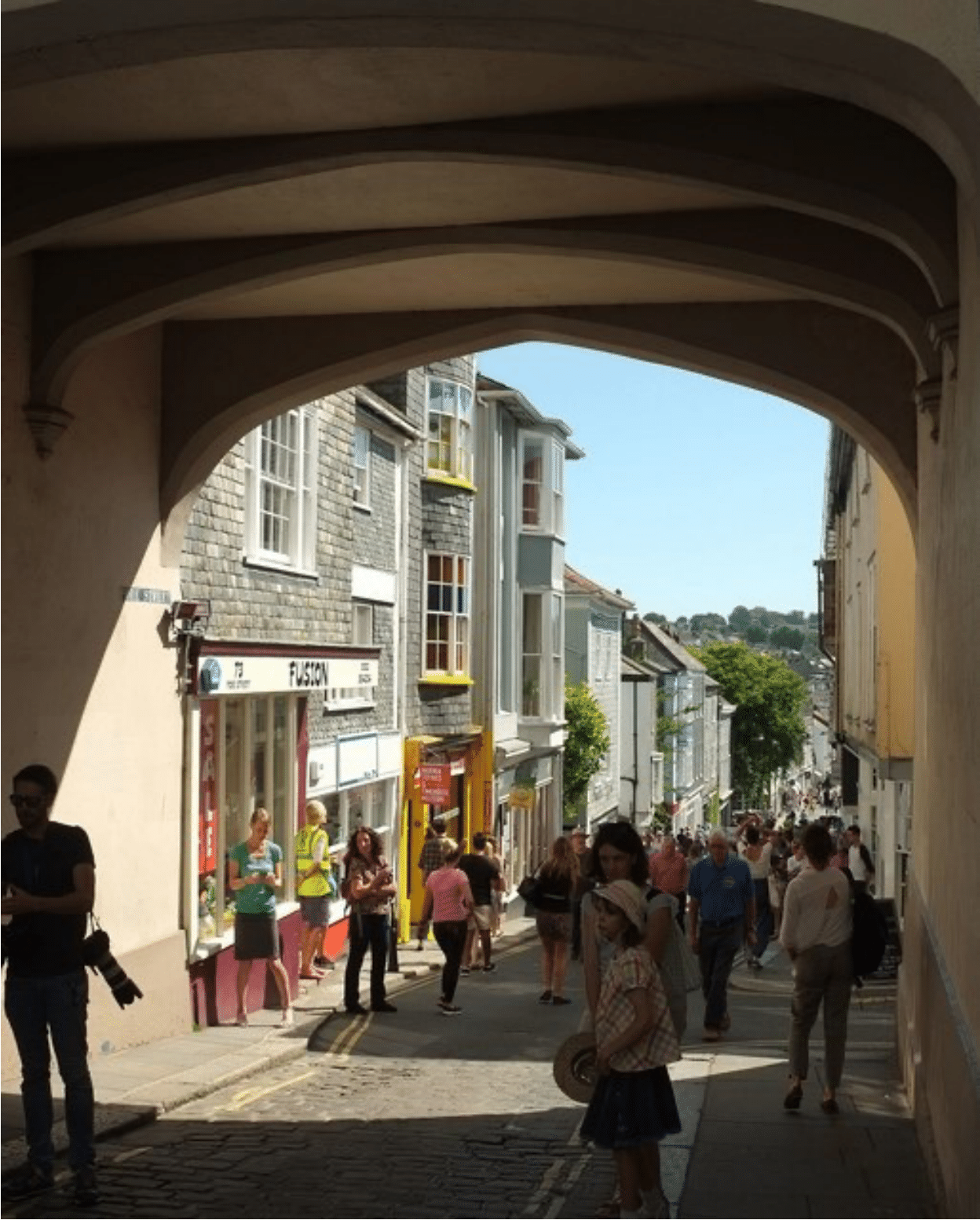
Since walking fosters an intimate relationship between the walker and the city, it also prompts him to take ownership of the place. Unfortunately, taking ownership often goes hand in hand with increasing use conflicts and territorial disputes. The more we walk, the less we are prone to walk with just anyone. Yes, walking also entails countless potential conflicts for space (crowded streets where people collide, long queuing, benches, and café terraces spilling out in the streets and places with static clusters of people to bypass, etc.). Everyone observes and adjusts to how the others behave, in a kind of huge open-air theater where we rub shoulders.
How is it different from other mammals’ territorial marking? Variations in the form of greeting when coming across an acquaintance or a complete stranger, are a subtle way to recognize and approve —or not— his presence and the place he takes in the public space. The fact is that public space materializes a political arena, as it shows people making bonds and alliances or distancing themselves from other residents: streets, places, staircases, lanes, gardens, and parks are locations where discussions and arguments take place, where gangs of teens meet, where elders sit together and chat, where people demonstrate, where placards and graffiti pop up the walls, etc. Therefore, walking can be seen as quite paradoxical activity: generating urbanity but also segregation and fragmentation.
Residents complain about supposed nuisances (noise, odors, filth, aggressive behavior) due to who they pejoratively call “bums, hobos, or homeless people”. In areas undergoing gentrification wealthy newcomers complain about the use of public space by poor locals that lived already there (children playing outside, people staying in the streets and discussing loudly at any hour, poorly maintained buildings, etc.). The objective is obvious in all these cases and for all these groups: to control their neighborhood so as to banish anything that does not comply with their standards in the matter of quality of life. As beautifully put by Jan Gehl, the value of streets and more generally of public spaces is the result of a confrontation between different groups of users. In fact, it rather is a political issue, an answer to the following question: Who and what vision should take priority? If one user group wins — by designing a new urban arrangement — another group may lose. Thus, designing the city (pavement, traffic lights, benches, streetlights, vegetalization, etc.) is not just a technical issue but also a social and moral one.
This applies to new urban furniture, the main function of is to prevent people — “vagrants” and homeless, but not only — from hanging out in the streets. They also make walking way less fluid and urban spaces more hostile. Eventually, they endanger the quality of life they were initially supposed to preserve. Usually, they are installed on the demand of local residents. The bench is the most noteworthy example of such an evolution — or should I say such a regression. Traditional urban benches were first installed in 19th-century European cities as a free service dedicated to resting. But recently, neighbors started complaining about homeless, “vagrants”, and teen gangs that used them. As a result, new types of benches were designed to make long stretch sitting uncomfortable and lying down almost impossible: single seating separated by armrests placed on top of the benches, shortened benches, perch-type benches, etc.
Therefore, no one sits on these benches anymore. So-called “troublemakers” have been evicted, but also have been the elders, couples, or just strollers. Urban life has been destroyed and these benches look like useless stranded whales. They turned into mere obstacles to bypass.
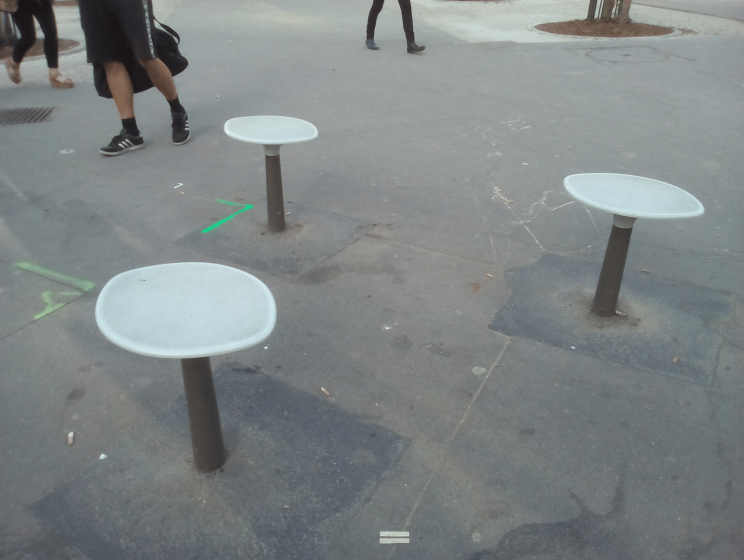
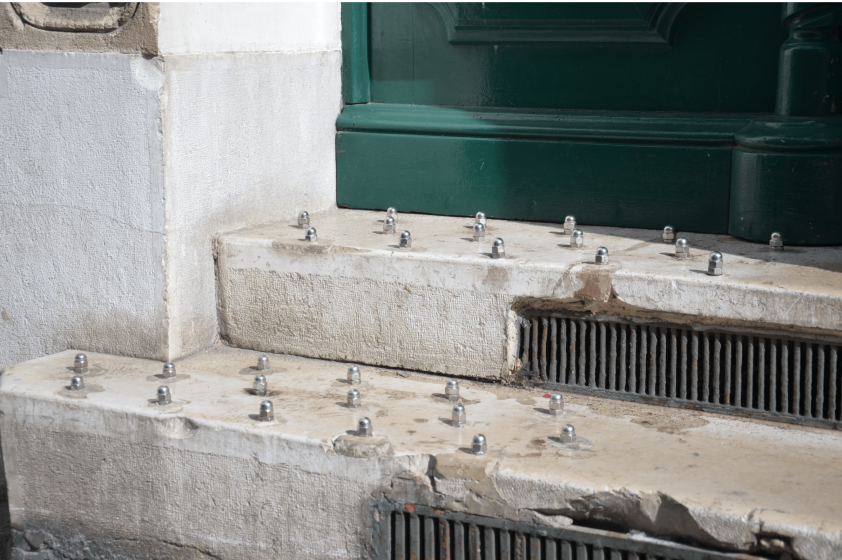
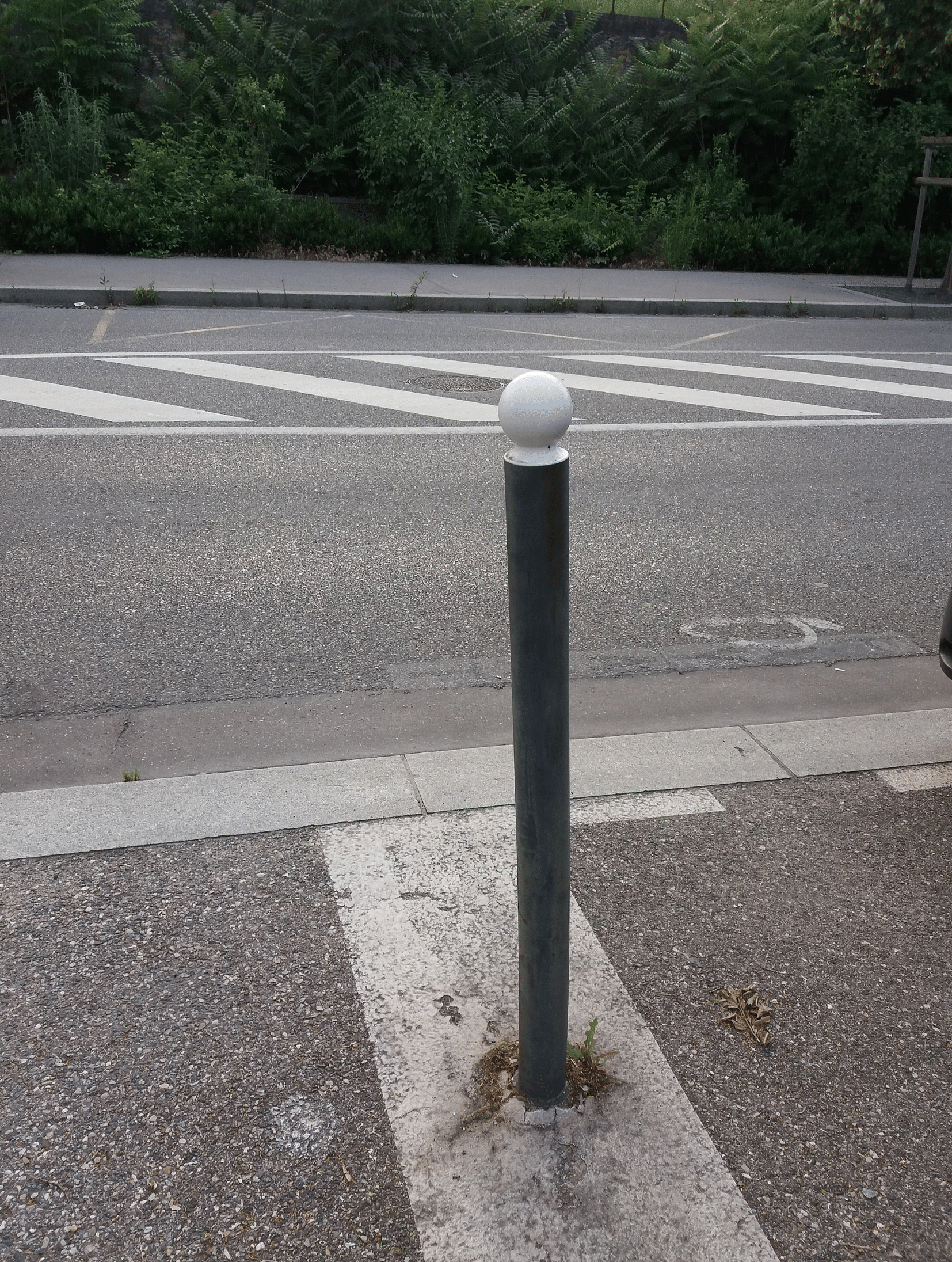
The same goes with the many posts — distant offspring of medieval stone pillars and modern bollards — installed to separate the sidewalk from pavement.
They are intended to prevent cars to invade, park or get around on the sidewalk. There are over 355,000 such posts in Paris. And they are effective in this task, indeed. But their presence also reduces the space available on the sidewalk, making walking rather uncomfortable. Besides, these posts are the symptom of local authorities’ preference for physical constraint when addressing space use conflicts. Would it not be better to try to build trust between the different groups of street users, through participatory design or tactical urbanism for instance?
Such devices encourage urban fragmentation (neighborhood watch, de facto privatization of public space, etc.). Outdoor use conflicts generate micro-divides that eventually disrupt the urban fabric. Strolling becomes almost impossible when traditional labyrinthine networks made of small streets, lanes, and alleyways are inaccessible. Even promenades along nice avenues become an ordeal when one must zigzag between constraining urban arrangements. As already mentioned, all this makes the city more hostile. Access to public space for everyone is endangered. Groups of residents stake a claim to their homogeneous neighborhood, with the aim of creating a stable and protective environment by excluding those considered non-desirable people. There is a contradiction between urbanity and such a coercive approach, whereas both result from conflicting views about what the place of walking in the city should be.
Having come so far, it is time for a quick recap. In a nutshell, walking is all at once: the more direct way to foster urbanity and quality of life through an immersive experience; a way to take ownership of the place we live in by restoring sensitive links between the walker and the city; but then also the spark that ignites conflicts and territorial disputes that entails segregation and urban fragmentation. Can it also become an instrument for reconciling these two seemingly contradictory aspects? May it help bring together under one roof the divergent needs and practices of microlocal communities?
Attempting to reunite such antagonistic visions means no less than making city inhabitants answer the following question: what do we really have in common? Addressing such a challenge is a clear case for the involvement of everyone in the co-construction of urban policies. And indeed, how can we take possession of our immediate environment, if not by walking? How is it possible to discuss with our neighbor — be he inimical or not — without going to meet him, which is usually easier on foot? Which also means being able to wander through the city and transgress the many barriers and edges that fragment it. Whether physically or through vision, audition, olfaction, or any other sense, one should be able to reach out to private areas and traverse urban hurdles.
Such a city is usually called “porous”. What is porosity here? It entails a capillary network of paths and streets, which penetrates the smallest nooks and crannies of the urban fabric, as well as open courtyards and open ground floors, plazas, accessible kitchens and community gardens, accessible terraces, etc. Designing a porous city is anything but obvious. Difficulties can be technical since characteristics of the actual urban fabric can make capillarity puzzling. But the greatest difficulty lies in territorial conflicts, avoidance behavior, and path dependency from the city’s inhabitants that we’re precisely trying to circumvent.
One solution may lie in tactical urbanism. For the record, tactical urbanism — also known as Do-it-yourself Urbanism, Urban Acupuncture, or Urban Prototyping — is a citizen-led approach based on temporary, low-cost, and local actions, to improve neighborhoods’ urban arrangements. Since these experiments are supposed to be scalable, tactical urbanism also aims at catalyzing long-term change of the global social and urban fabric. Guerrilla gardening (cultivating land that the gardeners do not have the legal rights to use) or de-fencing (removing unnecessary fences to break down barriers between neighbors and encourage community building) are two examples of such citizen-led actions. Recently tactical urbanism is being more and more institutionalized by local authorities. Paris-Plages (“Paris Beaches “) is a scheme developed by Paris city hall that may be related to tactical urbanism.
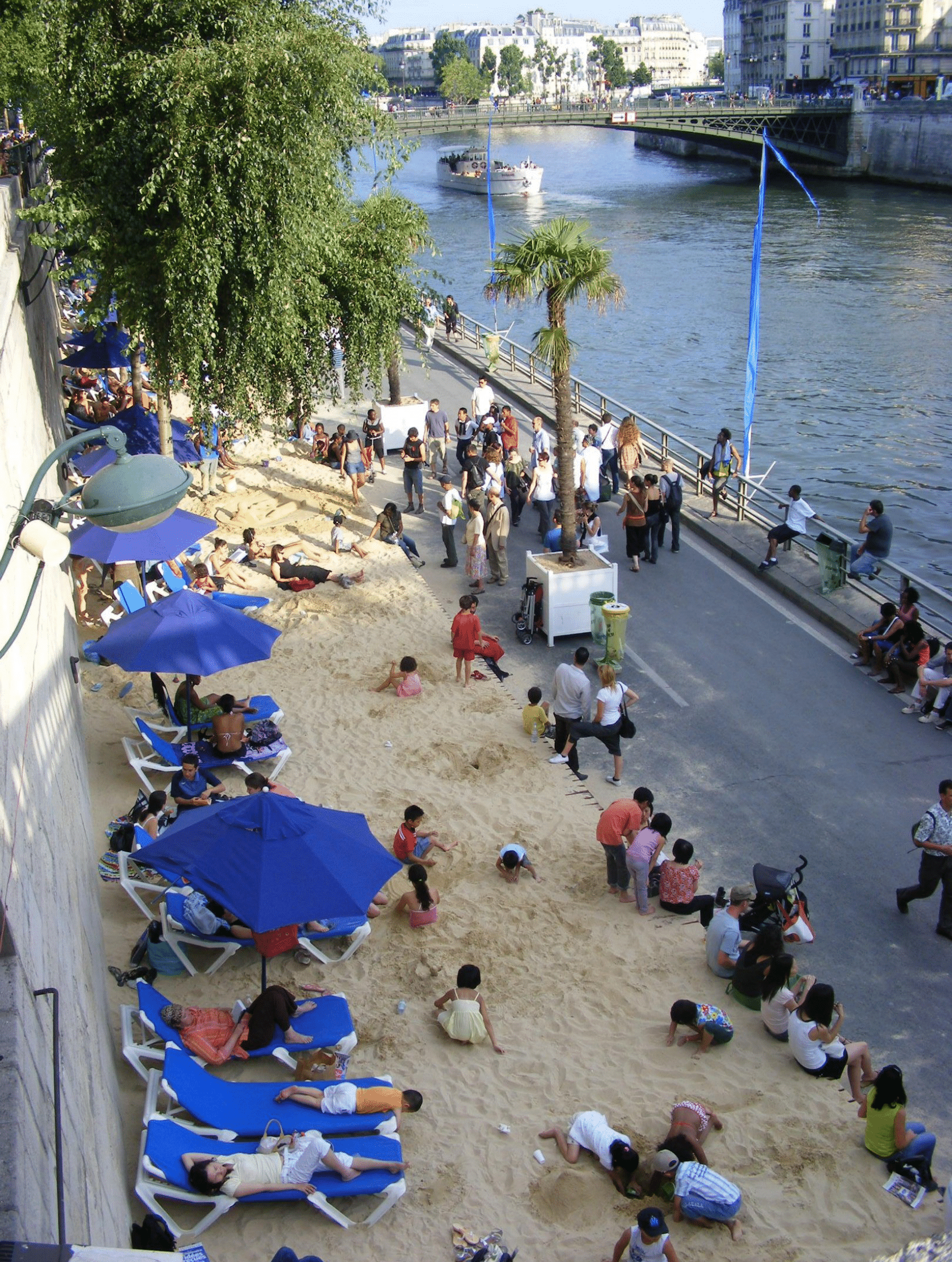
Every July and August, roadways on the banks of the Seine and along Bassin de la Villette are closed off, and temporary artificial beaches are created, including sand, palm trees, and various activities, including sandy beaches and palm trees. Ciclovia (cycleway) also named Open streets is another tactical urbanism type initiative established by local authorities. This initiative consists in closing temporarily certain streets to car traffic to give room to cyclists and pedestrians. These Open streets are regularly converted into permanent paths when a consensus rise amongst the residents and users of the street. First developed in Bogota Colombia, it is now a widespread initiative: you can find ciclovias in cities of countries as diverse as Australia, Argentina, Belgium, Brazil, Canada, Chile, India, Indonesia, Israel, Malaysia, Mexico, New Zealand, Peru, the United States. A driving force of tactical urbanism when developed by local authorities is to urge individuals to assume responsibility for creating sustainable buildings, streets, and neighborhoods.
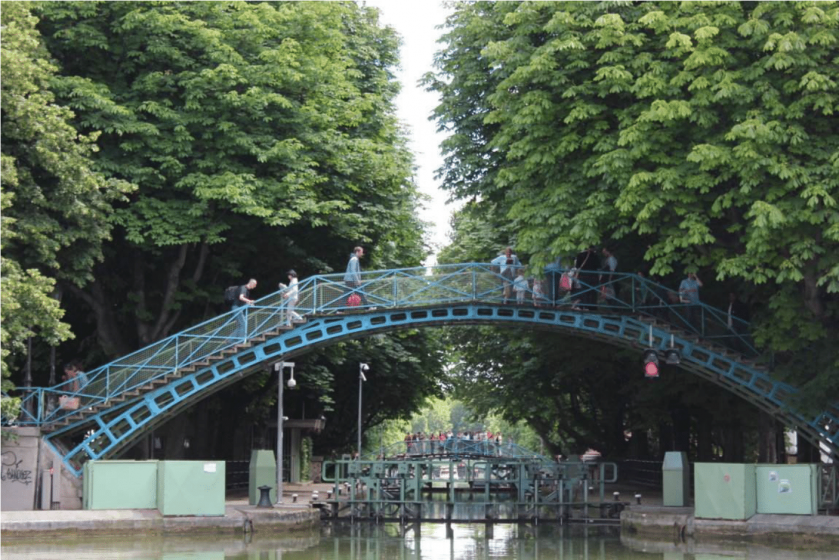
It is long overdue to explicitly make walkability the cornerstone of urban design. Walking is a habit shared worldwide by everyone since the dawn of humanity. But since it is so natural to walk, urban policies conventionally considered that walking should find its place in the city without any regulatory intervention. Alongside the invisible hand of the market, comes the invisible foot of urban policies. This must change: walkability is paramount to make cities friendly places where life is good, and urbanity central. And to do so, city residents are called upon to become city makers.
By the way, do you know how we say “it works” in French? The answer is “ça marche”. And do you know what it means literally? It means “it walks”. Yes, the only way to make things work, is to make people walk.
François Mancebo
Paris


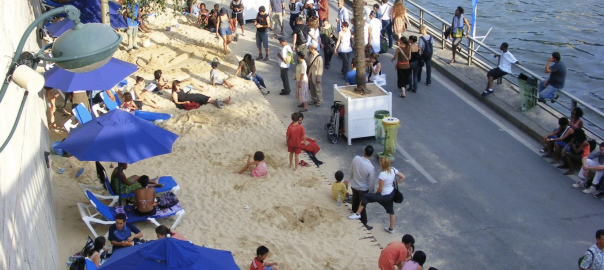
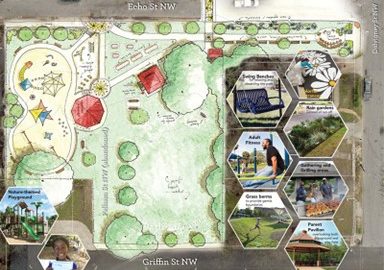

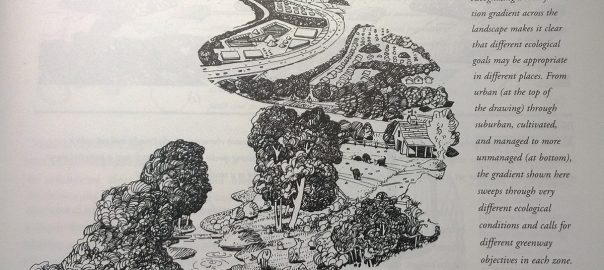
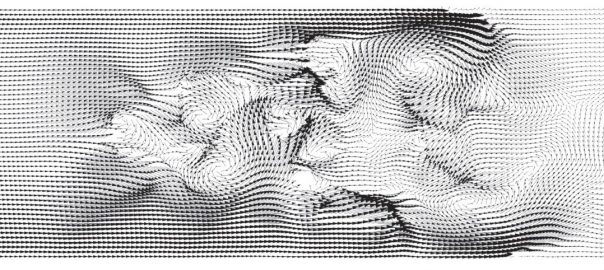
Leave a Reply